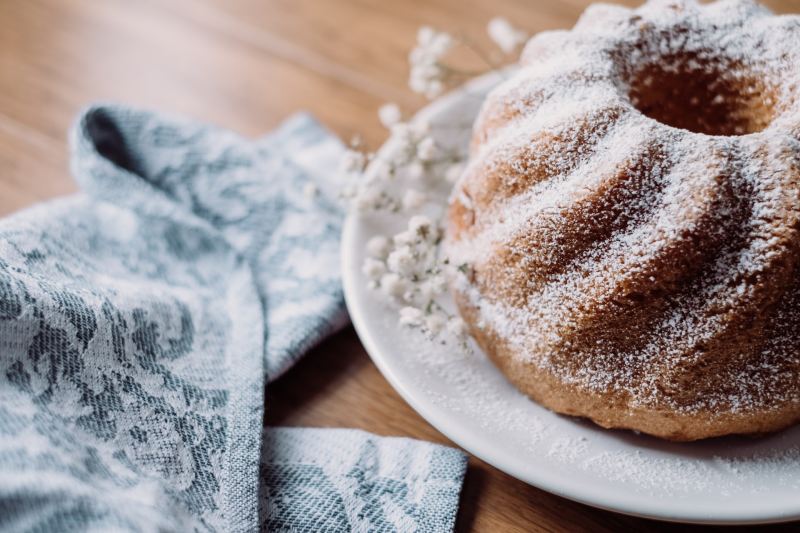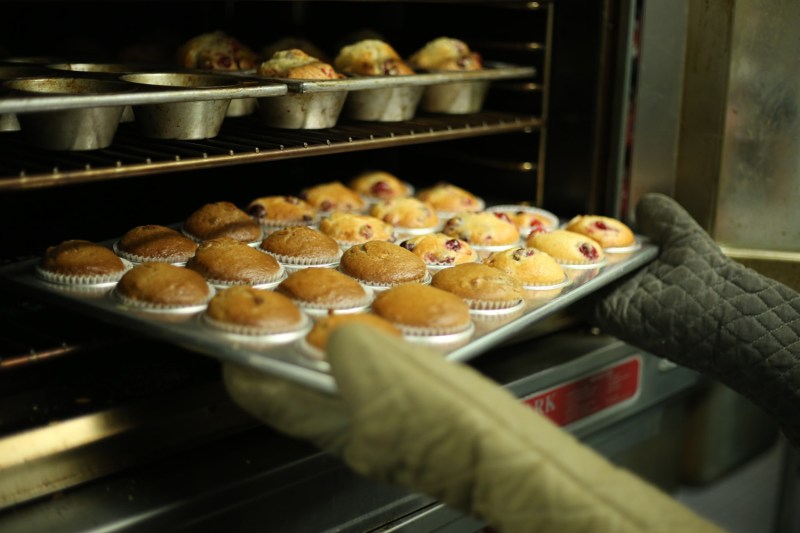
‘Tis the season to be baking, and for some, that may bring out an inner Grinch. After all, unlike in cooking, where we can let our inner chefs shine, adding and subtracting ingredients as we please, the rules of baking are quite a bit more precise. Measurements are important, math is rampant, and conversions are confusing. Yes, baking can sometimes be a frustrating experience, often worthwhile only because of its delicious results.
But what if we told you that with a little trick, you can not only get the ratios right every time, but also have some wiggle room for creativity? If you understand why baking works the way it does, and a bit of the science behind it, the whole process becomes a lot less intimidating.

The measurements of baking are often broken down into “parts.” You’ve probably heard a recipe described as “one part this, two parts that.” For example, a roux is equal parts flour and butter. Meaning, if you use half a cup of butter, you’ll also use half a cup of flour. Rice is often cooked using a two-to-one ratio — one part rice, two parts liquid. Both cooking and baking recipes are often described this way.

Understanding ratios
By understanding how many parts of each ingredient you need for certain baked goods, you’ll not only get a perfect result every time, but can relax when it comes to obsessing over the details of every recipe. Michael Ruhlman’s book, Ratios: The Simple Codes Behind the Craft of Everyday Cooking, explains the science behind basic ratios and fundamental techniques that help make even the most novice bakers understand the process of baking. These are a few of the most commonly used, most helpful ratios in everyday baked goods:
- Pie dough – 3 parts flour: 2 parts fat: 1 part water
- Muffins – 2 parts flour: 2 parts liquid: 1 part egg: 1 part fat
- Quick breads – 2 parts flour: 2 parts liquid: 1 part egg: 1 part fat
- Biscuits – 3 parts flour: 2 parts liquid: 1 part fat
- Pound cake – 1 part flour: 1 part butter: 1 part sugar: 1 part egg
- Pancakes – 2 parts flour: 2 parts liquid: 1 part egg: 1/2 part fat
Within these guidelines, you have the freedom to be creative with your ingredient choices. For example, “fat” refers to oils, butters, lard, etc. “Liquid” can be anything from milk to coffee to water or broth. Do keep in mind, though, that additional ingredients may change these ratios. For example, adding a particularly juicy fruit to the mix will add to your liquid ratio. So keep that in mind.
These measurements are tremendously helpful in not only understanding how ingredients work together, but also for scaling recipes up or down, depending on the amount you wish to bake.

Ratio tips and resources
For those eager to explore baking with ratios and unlock their creativity, here are four valuable resources to get you started.
- Find a good baking ingredients conversion chart and access it digitally so you can keep it on hand wherever you go. This is an essential kitchen tool for the serious baker.
- Consider Investing in The Baker’s Appendix, a valuable resource that offers a wealth of information, including ingredient conversions across different units, such as how to convert cups to grams.
- Buy a kitchen scale to work with weight-based ratios as well. Using a kitchen scale helps create precision beyond just volume measurements.
- Acquaint yourself with baking conversions and be sure to keep baking conversion charts handy if you don’t have them already.
So this holiday season, don’t fear the cookies. Tie on that apron with a smile, put the cookbook down, and relax.
Editors' Recommendations
- The best fried chicken recipe you will ever make
- The iconic Benjamin Steakhouse shares its best meat cooking tips
- This is the best wood for grilling and smoking, according to an expert
- Learn how to make perfect grill marks every time
- How to reheat pulled pork: 6 methods that will taste just as good the second time



